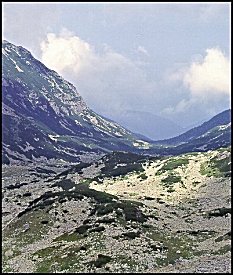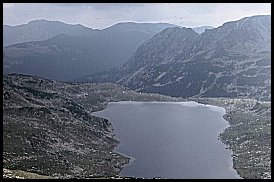
RETEZAT'S ENVIRONMENT
| The land area of Retezat National Park stretches from mixed deciduous forests at lower levels through spruce forests to sub-alpine and exposed rocky alpine regions of glacial origin. |
|---|

The Physical Environment
| The Retezat massif is composed mostly of Quaternary mica schist with granite intrusions. |
|---|
On its south side there is an area of Mesozoic limestone and karst landscapes with caves. The park consists of deep narrow valleys and glacial plateaux, there are over sixty peaks exceeding 2 200 metres in altitude and more than eighty glacial lakes such as Lake Bucura shown below. (Burford, 1993; REC, http).

Botanical Data
| Vegetation is very rich due to Retezat's relatively unaltered ecosystems, its location between vegetational provinces and its altitudinal range. |
|---|
More about the Vegetation
of Retezat
Land Use
| The two most significant traditional activities in Retezat are grazing and forestry. |
|---|
Forestry activities have been minimal and the forests have retained their natural composition and structure, however the return of control over grazing to the local communities following the end of communism is causing concern over the sustainability of current grazing levels.
